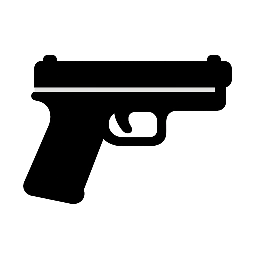When putting together an AR15 you will inevitably encounter roll pins (also known as spring pins). These small but critical components can cause outsized frustration — especially when installing pins for the bolt catch and forward assist. If installed improperly, these little pins can damage your AR15 lower receiver. In some cases, improper pin installation can even cause the trigger guard “ear” to snap off the receiver. What many builders don’t realize is that not all roll pins are created equal. There are two types of roll pins, and the kind you choose can make a big difference.
Slotted Pins / Split Pins
Slotted pins are the most common – and the cheapest. You will readily find them in budget lower parts kits. These pins are made from a single strip of steel rolled into a hollow cylinder with a longitudinal slit down one side. When compressed, slotted pins do not compress evenly around their circumference. Instead they flex inward across the diameter opposite the slot causing an out-of-round shape and uneven decompression.
Coiled / Spiral Pins
Coiled pins are pins formed by winding a flat strip of steel into multiple overlapping layers, creating a spiral or coil shape.
Coiled pins compress around their entire circumference while keeping their round shape. Because they compress uniformly and keep their shape, they are easier to install and remove. Once installed they will decompress and expand evenly inside the hole, applying consistent radial pressure without distortion or excessive force.
Why You Should Use Coiled Pins In Your AR15
- Installation & Removal
Coiled pins require less force to slide in and out of the receiver, even if your punch isn’t perfectly aligned. Their multi-layered construction makes them stronger and less likely to bend or be crushed during installation.
Slotted pins on the other hand, compress and decompress unevenly and are more prone to flaring, collapsing, or binding – increasing the risk of marring or damaging the receiver. - Less Damaging To The Receiver
Because coiled pins expand evenly after installation, they apply balanced radial pressure around the entire inner surface. This uniform pressure helps keep the pin holes round and prevents distortion.
Slotted pins, by contrast, apply uneven pressure that can cause micro-movements within the hole during recoil or parts movement (like the pivoting of the bolt catch). Over time, this can lead to hole elongation or “egging”. - Trusted By Premium Brands
It is an appeal to authority here, but high-end manufacturers like Geissele, Knight’s Armament, and LMT all use coiled pin in their rifles because they offer superior durability to slotted pins. These companies prioritize reliability and long-term durability, and their choice of coiled pins reflects that.
How Do I Get Coiled Pins?
Before purchasing a lower parts kit, check the type of pins that are included.
You can find coiled pins at hardware stores, McMaster-Carr, or online AR15 specific parts retailers.
Here are some of the common sizes you may want to pick up:
- 5/64 x 5/16 for the Gas Tube Pin
- 3/32 x ½ for the Bolt Catch Pin
- 3/32 x 5/8 for the Forward Assist Pin
- 1/8 x 5/8 for the Trigger Guard Pin
Final Thoughts
A roll pin maybe the smallest and perhaps the least important part in your AR15 – but choosing the right type can save you time and frustration, prevent damage, and could improve long-term durability.
Coiled pins aren’t flashy, but they are a simple and affordable upgrade that serious builders rely on. If you want to build an AR15 that will function reliably for years, starting with the right pins is an easy and inexpensive way to do it.


Leave a Reply